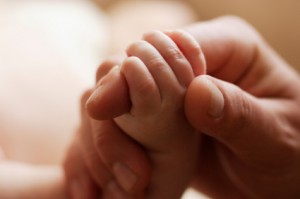Hemiplegia & Cerebral Palsy

Hemiplegia & Cerebral Palsy
Cerebral palsy presents itself in numerous ways. One of these forms is hemiplegia. Hemiplegia is a type of cerebral palsy that results from damage to the parts of the brain that control muscle movements. This damage may occur before, during or shortly after birth.
The term hemiplegia means that the paralysis is on one side of the body. A similar medical term, hemiparisis, means a weakness on one side of the body. In children with hemiplegia, the paralysis in the body occurs on the side opposite the affected part of the brain. For example, if the left side of the child’s brain is injured, then the paralysis will be on the right side of the child’s body.
1 in 1000 Children
Hemiplegia may occur during pregnancy, delivery or shortly after birth. However, it’s not uncommon to have hemiplegia develop well into the third year of a child’s development. This condition usually affects 1 in 1000 children, making it fairly common.
Hemiplegia and Adjustments
When it comes to hemiplegia, the hands, wrists, feet and ankles are usually more-affected than the limbs themselves. Doctors treating this condition may prescribe anti-clotting medication to ensure that the child doesn’t develop any clots as a result of poor blood circulation. Additionally, children with hemiplegia may be forced to take antispasmodic drugs to prevent muscle spasms.
Seizures are also common in children with this condition, so close monitoring by a professional may be needed. Another thing which can help improve the person’s quality of life include undergoing joint contractures or constraint-induced movement therapy in order to give some relief of prolonged muscle stiffness.
Hemiplegia Symptoms
Here are a few symptoms of hemiplegia you should watch out for if you suspect that your child has the disorder:
- Inability to sit up, stand or crawl even when a child is scheduled to reach these developmental milestones.
- Poor motor skills; the child may not be able to hold an object or manipulate it. This lack of dexterity is usually due to some form of trauma in the part of the brain which controls movement.
- Lack of coordination and balance; the child may fall over or find it hard to walk around without tripping over themselves every so often.
- Low IQ. The brain damage associated with hemiplegic CP can depress the child’s I.Q. by ~20 points.
- The most defining characteristic of hemiplegia is stiff or weak muscle tone affecting one side of the body more than the other.
Are There Treatments for Children With Hemiplegia?
Children with hemiplegia cannot be “cured”, but several therapies can help with some of the symptoms. Medication can be prescribed for seizures, physical therapy can help strengthen muscle groups, and orthotics (e.g., braces and splints) may help with spasticity and gait.
Causes of Hemiplegia in Children
- Cerebrovascular accident (CVA) such as fetal asphyxia, stroke, or thrombosis (embolism or hemorrhage)
- Transient ischemic attack (TIA) or hypoxic ischemic encephalopathy
- Migraine syndrome
- Head Trauma (brain contusion, subdural hematoma or epidural hematoma)
- Sturge-Weber Syndrome
- Todd’s Paralysis
- Brain tumor (Primary or metastatic disease)
- Infection (brain abscess, encephalitis, subdural empyema or meningitis)
- Nonketotic hyperosmolar coma
- Vasculitis
- Demyelinating disease (multiple sclerosis, acute necrotizing myelitis)
- Hereditary disease (leukodystrophies)
- Congenital or perinatal injury
- Arterovenous malformations
- See more causes or cerebral palsy…
Hemiplegia is expensive to treat and rehabilitate. Given the fact that most cerebral palsy cases can be attributed to medical malpractice during pregnancy and delivery, you may be entitled to file a lawsuit to get compensation. Call us today at 1-855-833-3707 to learn about your legal options for no cost.
